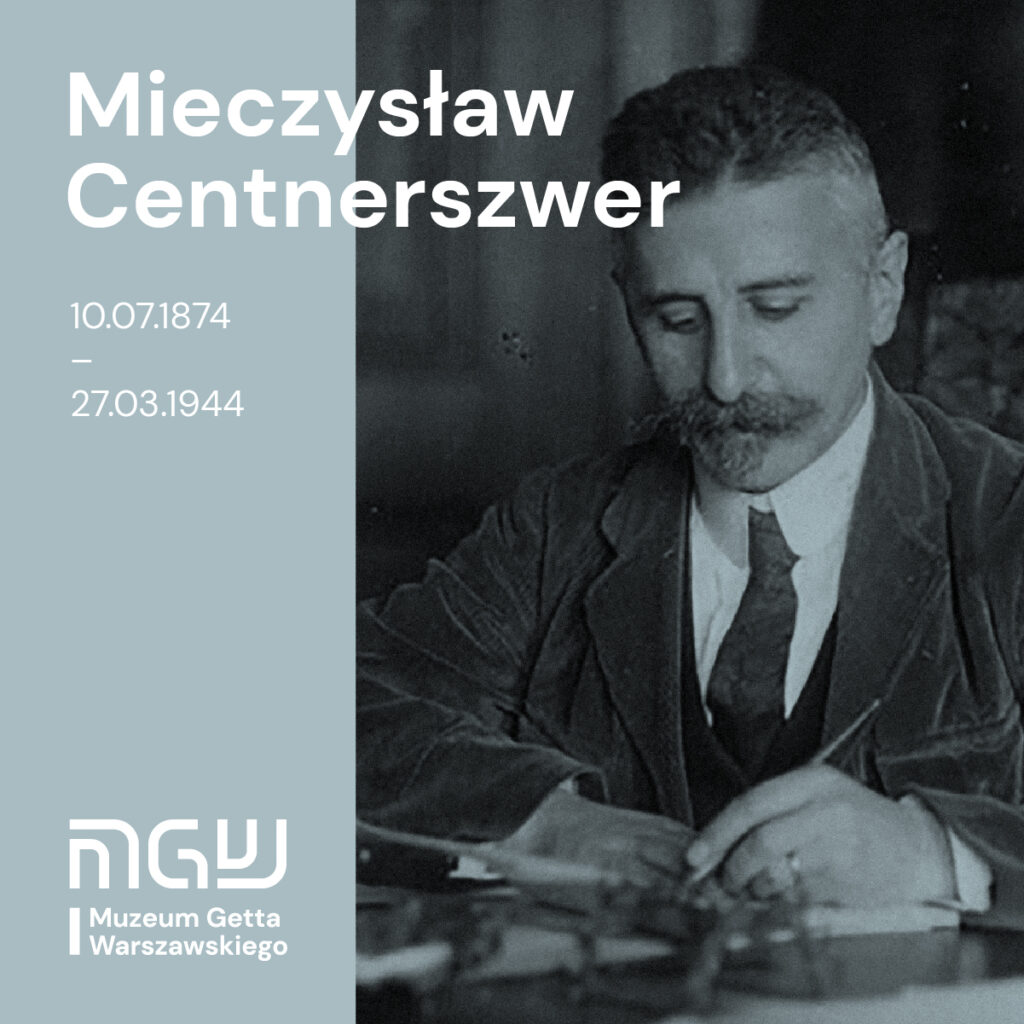Mieczysław Centnerszwer (10.07.1874–27.03.1944)
chemist, scientist, university lecturer, professor at the Riga University of Technology, the University of Latvia and the University of Warsaw

He was born in Warsaw. He came from the Jewish intelligentsia: his father, Gabriel Centnerszwer, was a bookseller and writer, while his grandfather, Jakub Centnerszwer, was a mathematician and teacher. In keeping with family tradition, he attended secular schools since childhood. After graduating from high school in Warsaw, he went to Leipzig, where he began bibliological studies with the intention of taking over the management of his father’s bookstore in the future. After a year of study, he decided that he was sufficiently prepared for this role and decided to focus on his passion, the natural sciences.
While studying biology, he worked in the laboratories of zoologist Rudolf Leuckart and botanist Wilhelm Pfeffer. It soon became apparent that his fascination with chemistry won out over biology, prompting him to change direction. In 1898, he defended his doctoral thesis on physical chemistry, which he had prepared under the supervision of Wilhelm Ostwald. Two years after receiving his doctorate, he married a German woman named Francizka Anna Beck in Berlin, who converted to Judaism for him.
In the following years Mieczysław Centnerszwer’s academic career developed successfully. In 1917-1919 he was a professor at the Riga University of Technology and in 1919-1929 a professor at the University of Latvia in Riga. In 1932 he became head of the Department of Physical Chemistry at the University of Warsaw. He was also a member of the Polish Academy of Arts and Sciences and received honorary doctorates from the University of Latvia and the University of Madrid. In 1928 he was awarded the Officer’s Order of the Academic Palms, a high French state award given to the most outstanding scientists and university lecturers. He co-authored two patent applications, “Process for the Production of Potassium and Calcium Carbonate by Electrolysis” (1932) and “Galvanic Cell or Electric Battery” (1935). He co-authored over 100 scientific publications in Polish, German, Russian, and Latvian; he wrote in “Wszechświat,” “Wiedza i Życie,” “Gazeta Polska,” and “Chemik Polski.” He shared socialist views; he was chairman of the Jewish trade union “Akhdut” – “Unity”.
After the outbreak of World War II and the establishment of the ghetto, the Centnerszwer family decided to formally divorce so that Francizka could remain in the privileged Aryan group with her daughter Jadwiga. Centnerwszer lived in the ghetto at 5 Ogrodowa Street. He made a living by lecturing on chemistry and physics to artisan dyers and medical service employees in Juliusz Zweibaum’s sanitary preparation courses. Before the Germans started the so-called Great Action, he managed to obtain false documents in the name of Wierzbicki, with the help of which he got to the Aryan side. He was shot by the Gestapo in his ex-wife’s flat in Saska Kępa on March 27, 1944.

